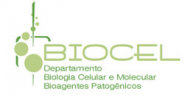Lider (es): Ricardo Guelerman Pinheiro Ramos
Telefone (s): (16) 3315-3027; (16) 3315-3350
Linha de pesquisa
Biologia do desenvolvimento
Linhas de Pesquisa/Research Areas
O desenvolvimento embrionário de um organismo é um dos fenômenos mais básicos, e ao mesmo tempo mais complexos, da biologia, se desdobrando em uma variedade de questões específicas, porém inter-relacionadas, e que requerem para seu entendimento uma abordagem integrada em nível morfológico, celular, genético e molecular. Nosso grupo de pesquisa está há vários anos estudando a estrutura, a função e a regulação espacial e temporal da proteína Roughest (Rst) de Drosophila melanogaster, o membro prototípico da família Neph-Rst, um grupo de glicoproteínas transmembranares da superfamília das imunoglobulinas filogeneticamente conservado desde nematódios até humanos, envolvidos em uma variedade de processos de adesão e sinalização durante o desenvolvimento embrionário e pós-embrionário. No presente projeto é proposta a continuidade e expansão destes estudos visando:
a) Entender as complexas relações existentes entre os diferentes domínios estruturais das proteínas das famílias Neph-Rst e suas múltiplas funções durante o desenvolvimento
b) Definir e caracterizar contextualmente e suas funções gênicas e vias de transdução de sinais capazes de modular diretamente a atividade de rst tanto em nível transcricional como pós-transcricional, a fim de obter uma compreensão global e integrada de sua multiplicidade fenotípica e
c) Estabelecer o grau de conservação e divergência evolutiva entre os mecanismos moleculares subjacentes ás funções de Rst em Drosophila e os de seus homólogos em outros organismos, especialmente vertebrados , e quais as suas conseqüências para a evolução dos modos de desenvolvimento embrionário em metazoários.
Sugestões de leitura
Simon, C.R., Ramos, R.P.G. (2006). Death by fine tunning (review). Braz. J. Morphol. Sci, 23(1),3-13.
Apitz, H., Kambacheld, M., Hohne, M., Ramos, R.P.G., Straube, A., Fischbach, K-F. (2004) Identification of regulatory modules mediating specific expression of the roughest gene in Drosophila melanogaster. Development Genes and Evolution 214,453-9.
Araujo, H., Machado, L. C. H., Octacílio-Silva, S., Mizutani, C. M., Silva M. J. F. and Ramos, R. G. P. (2003). Requirement of the roughest gene for differentiation and time of death of interommatidial cells during pupal stages of Drosophila compound eye development. Mech. Dev. 120, 537-547
Strünkelnberg, M., Bonengel, B., Moda, L., Hertenstein, A., Gert de Couet, H., Ramos, R.G.P. e Fischbach, K.-F.(2001). Rst and its paralogue kirre act redundantly during embryonic muscle development in Drosophila. Development, 128 4229-423
Ramos, R.G.P., Igloi, G.L., Baumann, U., Maier, D., Lichte, B., Schneider, T., Brandstätter, J.H., Fröhlich, A., Fischbach, K-F. (1993). The irregular chiasm C-roughest locus of Drosophila which affects axonal projections and programmed cell death encodes a novel immunoglobulin-like protein. Genes Dev 7, 2533-2547
